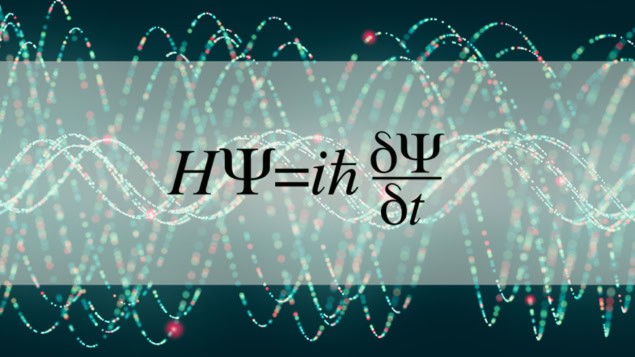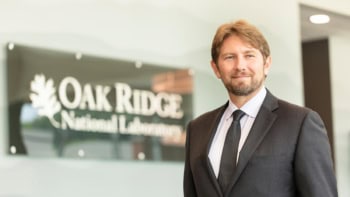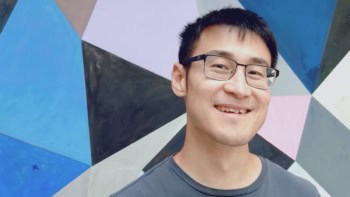
Physicists have developed a new theoretical framework that helps make sense of how quantum processes are limited by the classical space–time in which they are embedded. One of these processes is the quantum indefinite causal order (ICO), which is a puzzling consequence of quantum physics that has attracted a lot of attention and excitement lately. Quantum ICO systems could have applications in quantum technology, so gaining a better understanding of the phenomenon could have practical implications.
In a quantum ICO process, the temporal order of events is not fixed. Instead, the order is a quantum superposition of event A occurring before event B and event B happening before event A. Usually, such a statement is paradoxical: we are used to speaking about event A causing B, or vice-versa, but how can both be true simultaneously?
While quantum ICO events have been demonstrated in the laboratory, they appear incompatible with the classical interpretation of space–time causality that governs those experiments and indeed, the world that we live in. As a result, some physicists have cast doubt on whether ICO has actually been observed in the lab.
But now, V Vilasini and Renato Renner at ETH Zurich in Switzerland and the University of Grenoble in France have determined what conditions must hold for ICO processes to be possible in space–time. Their result is cast in the language of a no-go theorem, which is a proof that, under certain assumptions, it is impossible for something to occur.
Bell’s famous no-go theorem
Perhaps the most famous no-go theorem in quantum physics is Bell’s theorem. It was derived in 1964 by the Northern Irish physicist John Bell and concerns the purely quantum phenomenon of entanglement. Bell’s no-go test establishes that the correlations observed between two entangled particles cannot be the result of any process of classical physics that obeys space–time causality. Many Bell tests have been done in the laboratory using photons and other particles, and the results of these experiments are consistent with the quantum nature of entanglement. The Bell test has also been put to practical use in the E91 quantum cryptography protocol.
Bell’s no-go theorem puts a limit on classical processes in space–time causality. In their new work, Vilasini and Renner have created no-go theorems that limit quantum processes such as ICO in space–time causality.
The first no-go result demonstrates that it is possible to embed a quantum ICO in classical space–time, which is the space–time we access in the laboratory – and experience on a day-to-day basis – provided that we do not require the involved systems to be localized in space–time. These systems could, for example, be electrons or photons that are acting as the quantum bits (qubits) of a computation. Locality is the assumption that these particles are fixed at a particular location in space–time, but Vilasini and Renner’s result suggests that in order for the process to play out in classical space–time, it cannot possess this property of locality.
Cyclicity and acyclicity
Central to their work is the notion of cyclicity, and the opposite notion of acyclicity. Acyclic space–time does not contain cycles, meaning that one event cannot occur both before and after another event. ICO processes, on the other hand, are necessarily cyclic.
Their second no-go result says that any quantum ICO process that can be embedded in classical space–time can be realized instead by a process that is acyclic. What this means is that we can achieve the same result of the ICO process by replacing it with a different process that is in fact acyclic. This is something like an unravelling, and referred to by Vilasini and Renner as “coarse graining”.

Experiments with quantum cause and effect reveal hidden nonclassicality
Vilasini tells Physics World that there is a nice classical analogy: “the demand and price of a commodity may influence each other forming a cyclic causal structure, but upon a closer look this unravels into an acyclic structure where demand at time 1 influences price at time 2, which is greater than time 1, which in turn influences demand at time 3 and so on”.
Quantum ICO processes are not only important from a theoretical standpoint. They have been shown to be useful in a variety of tasks, ranging from refrigeration, or the cooling down of something, to reliable and noiseless communication between people. In particular, the use of quantum ICO’s results in performances that are superior to those achieved by classical machines.
Future research in this field could improve our understanding of the interaction of ICOs and quantum gravity. While ICO processes have been studied in space–times in which gravity and quantum effects play a role, it still remains for no-go results, akin to those of Vilasini and Renner’s, to be worked out. This would shed light on the role of causality in quantum gravitational regimes, an area of research of pressing importance.
The research is described in Physical Review Letters and Physical Review A.



